What's in a Berwickshire place name?
- Published
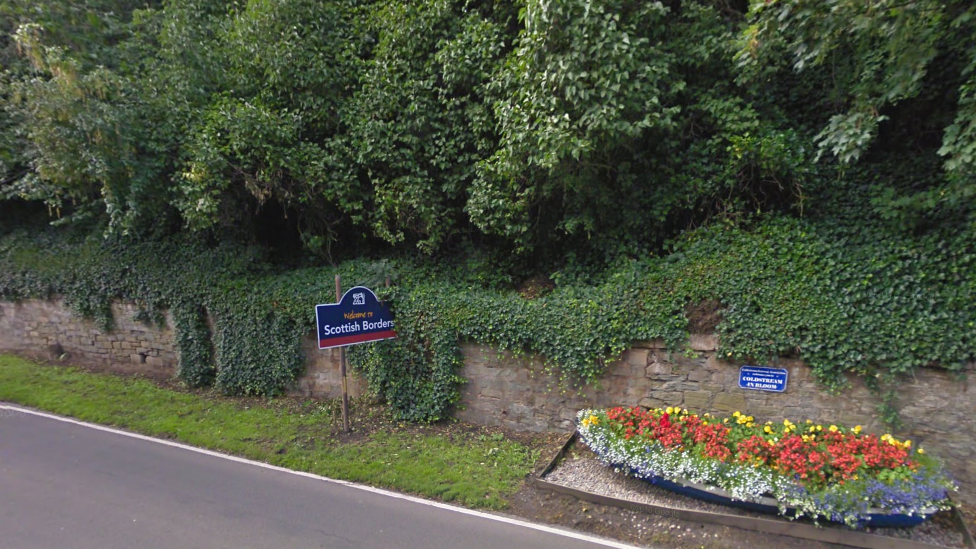
When you look at a signpost welcoming you to a town or village, what do you feel?
Relief, perhaps, at having reached your destination or concern that you may have gone off course.
Researchers at the University of Glasgow, however, see past the signs to the stories they tell about an area's culture, history and heritage.
At the moment, as part of a wider study into Scotland's linguistic history, they are focused on Berwickshire.
But what have they found?

A river runs through it
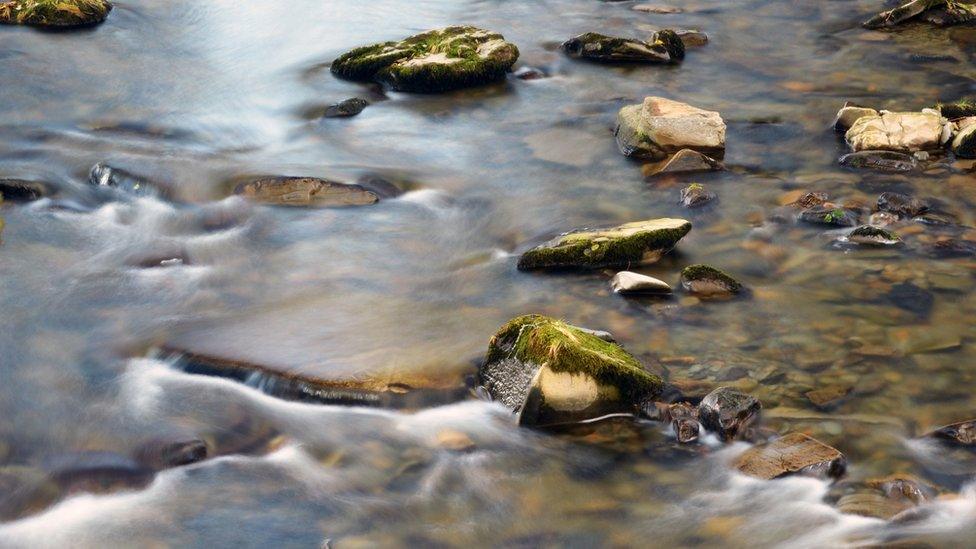
Rivers have often inspired place names across Berwickshire and beyond
"A noteworthy feature of Berwickshire place names is the number which have been coined in relation to rivers, showing that the name-givers' sense of identity was in some way defined by the waters which flowed through their land," said lecturer Dr Simon Taylor.
"The Whiteadder Water (in its basic form 'Adder') has been especially productive in this regard, with both Edrington and Edrom referring to it, the first probably meaning 'farm (Old English tūn, Scots toun) of the people dwelling along the Adder', while the second is the river name combined with Old English hām 'a settlement'.
"Similarly Leitholm, earlier Letham, is 'the hām on the Leet Water'."
Just over the Berwickshire border near Kelso, Ednam owes its name to the Eden Water while Ayton comes from the Eye Water as does Eyemouth.
"There is even one farm name that is lifted straight out of the water, so to speak: this is Blackadder (Edrom parish), by the Blackadder Water, which appears as a settlement-name as early as 1095," added Dr Taylor.
"Another good example of this kind of name is in neighbouring East Lothian, where Tyninghame refers to the settlement of the Tyne-dwellers.
"These are all relatively old names, coined more than a thousand years ago.
"They contrast with later names of water courses which take their name from settlements or features they flow near, such as Langton Burn, Kirk Burn or Monynut Water.
"Wedderburn (Castle) by Duns is an interesting case, in that it has taken its name entirely from the Wedder Burn, the old name (first appearing in the 13th Century) of the burn which flows past it, and which is now called the Langton Burn."

A 'very odd outlier'
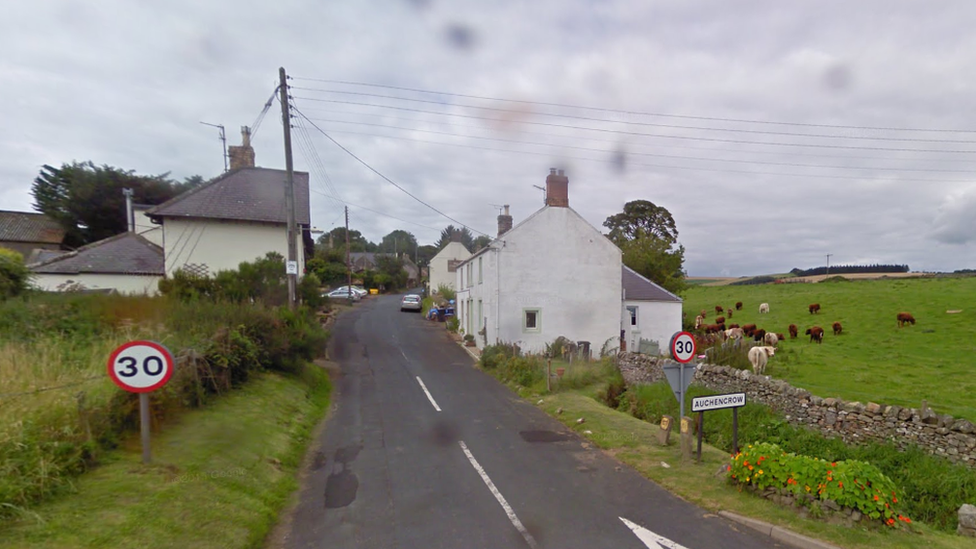
Auchencrow has proved particularly interesting to researchers
Auchencrow, a village in Coldingham parish, stands out from the crowd to researchers as looking "extremely Gaelic".
The Auchen comes from the Gaelic achadh, meaning field, and the "crow" possibly from crodh, meaning cattle.
"There is one probable example of an achadh-name in the neighbouring county of East Lothian, and a handful in Midlothian, with the numbers increasing greatly towards west and the south-west," said Dr Taylor.
"So looked at on a map Auchencrow is a very odd outlier, and if it were Gaelic it would prompt at least a partial rewriting of the linguistic history of north Berwickshire."
However, he points out that the name has evolved significantly going back about 800 years.
Around 1210 there are references to Aldenegraue which had become Aldencraw by the end of that century.
It was Adincraw in 1608, then Edincrae and Edincraw before Auchincraw in 1771 and its current name by 1860.
"The first thing that becomes clear from these is that the name has undergone a remarkable transformation," said Dr Taylor.
Some changes are easier to explain than others but one element could be down to a process known as analogy or analogical reformation.
"This is where a more unusual, unexpected element in a place name is made to look like a more usual, expected one," he said.
"In this case the more unusual element Eden has been replaced by the ubiquitous and familiar Auchen.
"Exactly this happened in the name Auchindownie, near Largo in Fife, which appears as Edindowny etc up until the mid-17th Century, when Auchen-forms begin, and soon come to completely dominate the record."

Well, well, well
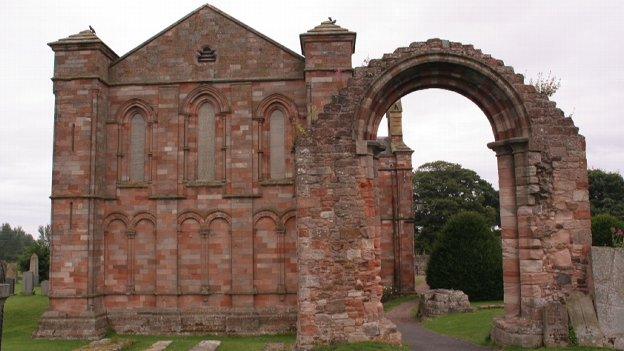
Silverwells had been explained as a well into which pilgrims threw silver en route to Coldingham Priory
Silverwells, a settlement near Coldingham, clearly takes its name from a well but not, perhaps, for the reasons previously believed.
"The name has been explained as a well into which pilgrims threw silver on their way to Coldingham Priory, or as a reference to the silver birch trees that are prominent in the vicinity," said Dr Taylor.
"However, comparison with other watery names with the same first element, such as Silverbeck in northern England, and with the linguistic development of the word silver, suggests that the reference is to the brightness of the water."

For the birds
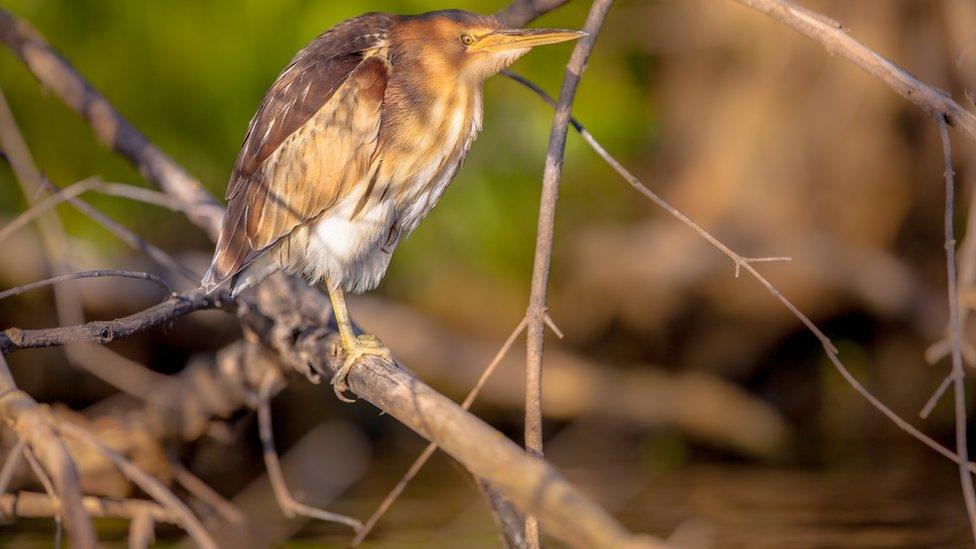
Bitterns are believed to have given Bemersyde its name
An animal theme has also emerged to some names in the area.
The village of Bemersyde is named after bitterns and the parish of Cranshaws after cranes, both once common in the area.
Wolf Cleugh comes from the wolves which hunted Scottish woodlands and forests but have been extinct for some time.
However, it seems unlikely the humble worm had anything to do with the name Wormerlaw which has been reckoned to be a derivative of the Old English name Wulfmær.

Body of work

Eyemouth is a rare name to contain two body parts in one place
"It is usually difficult to date place names, unless they are associated with a known person or event," said Prof Carole Hough.
"One such may be Ladykirk, apparently named from the church built and dedicated to the Blessed Virgin Mary by James IV in thanksgiving for being saved from drowning in the Tweed in 1499.
"The place-name had formerly been Upsettlington."
Another influence can come from the human body.
"Many Scottish place names refer to body parts, as with Burnbrae (Scots brae 'eyebrow, brow of hill'), Drumchapel (Gaelic druim 'back, ridge'), Grangemouth (English mouth 'mouth of person or river'), Hillhead and Hillfoot," said Prof Hough.
"However, it is rare to find two body parts in the same place-name, as with the Berwickshire name Eyemouth (mouth of the Eye Water)."
These findings and much more are part of the project, running to 2019, which will create a fully searchable website of Berwickshire place names designed for both public and academic use.
It will cover a comprehensive survey of six parishes: Coldstream, Eccles, Foulden, Hutton, Ladykirk and Mordington.
And it might also give food for thought to people arriving in the towns and villages of Berwickshire.